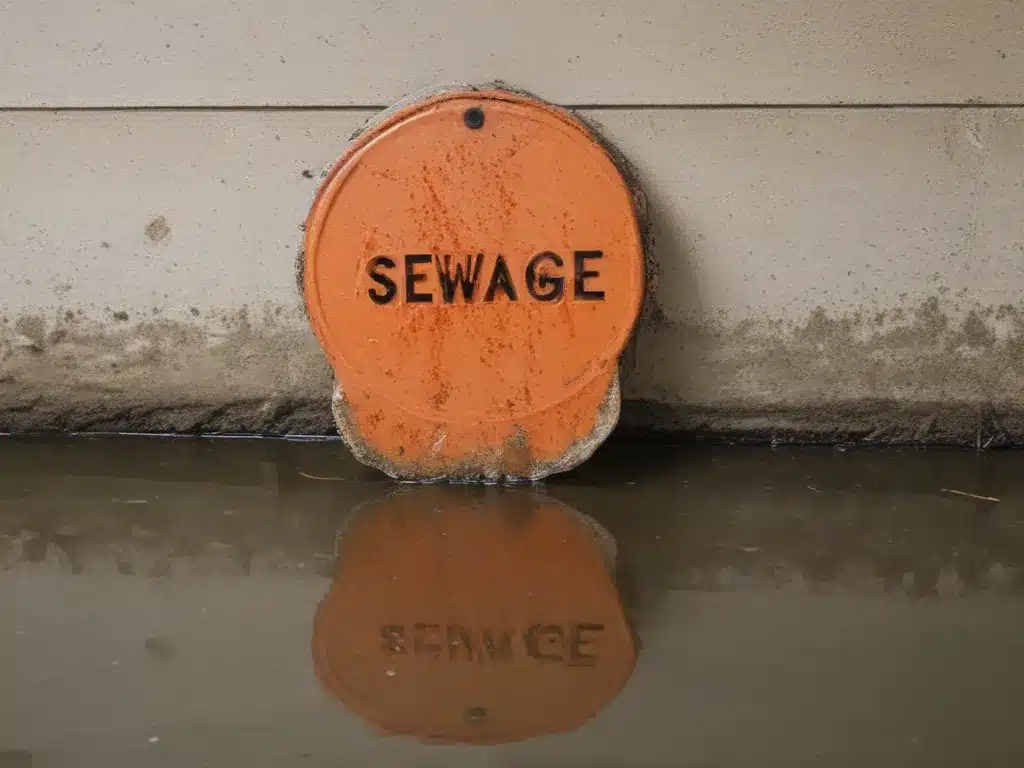Introduction
Sewage backups can be a nightmare for any homeowner or business owner. They not only create a foul odor but also pose serious health risks if not handled properly. As a professional cleaning company, I have dealt with numerous sewage cleanup projects and understand the importance of taking the right steps to ensure a safe and thorough cleanup process.
In this article, I will share my extensive knowledge and experience in sewage cleanup, providing you with valuable tips and insights to help you navigate this challenging situation effectively. Whether you’re dealing with a minor spill or a major sewage backup, this guide will equip you with the necessary information to tackle the problem head-on.
Identifying the Source of the Sewage Backup
The first step in any sewage cleanup process is to identify the source of the backup. This will not only help you take the necessary steps to stop the flow but also provide valuable information for future prevention measures. Common causes of sewage backups include:
- Blocked or clogged sewer pipes
- Tree root intrusion into sewer lines
- Sewer line damage or collapse
- Heavy rainfall or flooding
Determining the cause of the backup will guide you in taking the appropriate actions to resolve the issue and prevent future occurrences.
Safety Precautions for Sewage Cleanup
Sewage contains harmful pathogens, bacteria, and viruses that can pose serious health risks if not handled properly. It is crucial to take the necessary safety precautions to protect yourself and others during the cleanup process. Here are some essential safety tips:
- Wear protective gear, including rubber gloves, boots, and a respirator or face mask
- Avoid direct contact with sewage and contaminated surfaces
- Wash your hands thoroughly after handling sewage-contaminated materials
- Disinfect all tools and equipment used during the cleanup process
Remember, your safety should always be the top priority when dealing with sewage backups.
Step-by-Step Sewage Cleanup Process
Effective sewage cleanup requires a systematic approach to ensure a thorough and safe remediation process. Here is a step-by-step guide to help you navigate the cleanup process:
-
Stop the Flow: If the sewage backup is ongoing, your first priority should be to stop the flow. This may involve turning off the main water supply or contacting a plumber to address the underlying issue.
-
Remove Standing Water: Once the flow has been stopped, you need to remove any standing water from the affected area. This can be done using a wet/dry vacuum or a submersible pump, depending on the amount of water present.
-
Discard Contaminated Materials: Any materials that have been contaminated by sewage, such as carpets, upholstery, and insulation, should be discarded as they cannot be effectively cleaned and disinfected.
-
Clean and Disinfect: Thoroughly clean and disinfect all affected surfaces using a suitable disinfectant solution. Pay special attention to areas that are difficult to reach or clean.
-
Dry the Area: After cleaning and disinfecting, it is essential to dry the area completely. This can be done using fans, dehumidifiers, or professional drying equipment.
-
Conduct a Final Inspection: Once the area is dry, conduct a final inspection to ensure that all affected areas have been properly cleaned and disinfected. If necessary, repeat the cleaning and disinfection process.
Throughout the cleanup process, it is essential to follow proper safety protocols and seek professional assistance if the situation becomes too complex or hazardous to handle on your own.
When to Hire Professional Sewage Cleanup Services
While minor sewage spills or backups can be handled by following the steps outlined above, there are situations where hiring professional sewage cleanup services from a reputable company like AdamCleaning.uk is highly recommended. These situations include:
- Large-scale sewage backups or floods
- Contamination in hard-to-reach areas or confined spaces
- Sewage backups in commercial or industrial settings
- Presence of hazardous materials or biohazards
Professional sewage cleanup companies have the necessary equipment, training, and expertise to handle even the most challenging sewage situations efficiently and safely. They follow strict protocols and use specialized cleaning techniques to ensure thorough decontamination and restoration of affected areas.
Preventing Future Sewage Backups
While sewage backups can be a frustrating and unpleasant experience, there are several preventive measures you can take to minimize the risk of future occurrences. Here are some tips to help you prevent sewage backups:
- Regular maintenance and inspection of sewer lines
- Avoiding flushing non-biodegradable materials down toilets or drains
- Installing backflow prevention devices
- Keeping sewer lines clear of debris and tree roots
- Addressing any plumbing issues promptly
By taking proactive steps to maintain your plumbing system and address potential issues early on, you can save time, money, and the hassle of dealing with sewage backups in the future.
Conclusion
Sewage backups can be a challenging and unpleasant situation, but with the right knowledge and approach, they can be effectively managed and resolved. By following the tips and guidelines outlined in this article, you can ensure a safe and thorough sewage cleanup process, minimizing health risks and preventing further damage.
Remember, your safety should always be the top priority when dealing with sewage backups. If the situation becomes too complex or hazardous, do not hesitate to seek professional assistance from reputable sewage cleanup companies like AdamCleaning.uk. Their expertise and specialized equipment can provide you with peace of mind and ensure a successful and efficient cleanup process.
Stay vigilant, take preventive measures, and be prepared to address sewage backups promptly and effectively to maintain a safe and healthy living or working environment.







